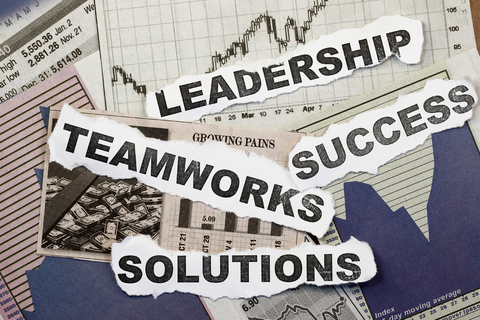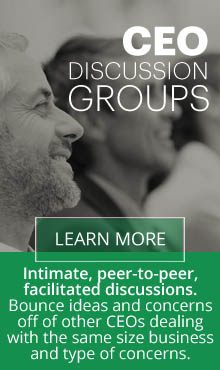 Henry has a decision to make. The disgruntled customer in front of him has a valid point. There had been a mix up on the part of Henry’s service team and things had not gone smoothly. It wasn’t the end of the world but the customer had been inconvenienced once and now the ‘fix’ is going to inconvenience this customer again. Henry feels that that the extra discount and consideration that the customer is asking for is not unreasonable. How can this be handled? How would your company handle it? Using a centralized leadership model or a distributed leadership model?
Henry has a decision to make. The disgruntled customer in front of him has a valid point. There had been a mix up on the part of Henry’s service team and things had not gone smoothly. It wasn’t the end of the world but the customer had been inconvenienced once and now the ‘fix’ is going to inconvenience this customer again. Henry feels that that the extra discount and consideration that the customer is asking for is not unreasonable. How can this be handled? How would your company handle it? Using a centralized leadership model or a distributed leadership model?
Centralized Leadership Resolution
Henry has to contact a manager. The manager has to stop what she is doing, come to where the customer is, listen to the story, hear the customer’s request, calculate if it’s reasonable and make a decision. Meanwhile Henry is standing there listening and waiting and being unproductive. Then Henry does what is necessary to put through the orders to accomplish the decision. Plenty of time has passed and the customer is thinking about all of his time that is being wasted. If the customer is still not happy, he might ask to escalate his request to yet another higher level manager. His blood pressure is rising if he’s not satisfied and you can be sure all his friends will hear about how they should stay away from this company and especially Henry.
Distributed Leadership Resolution
Henry has been trained and empowered to make decisions on the spot. He sees that the customer’s request falls within what he has been authorized to decide himself. He graciously agrees with the customer and puts through the order immediately. The customer is pleased that it has taken only a minute and his needs have been listened to and satisfied with no hassle. He considers Henry his new best friend and tells all his friends that Henry’s company acknowledges and takes care of their screw-ups without drama. He says he’ll be back when he needs to buy again.
In an organization you can have the leadership be centralized in top management or you can have it be distributed among all the staff. Distributed leadership is when your employees are empowered to make decisions that benefit the customer and accelerate the operations of the company. Distributed leadership is a characteristic of high performance teams. When people are given the latitude to make their own decisions, they try new things. Initiative increases, productivity increases, morale increases because people feel trusted. The leadership model, whether centralized or distributed, is a characteristic of a company’s culture and it is determined at the top. A micromanaging executive cannot generate a culture of distributed leadership because he’s concerned about maintaining control. Distributed leadership is about passing control to people on the front line so customers get taken care of easily, less time is wasted on everybody’s part, costs therefore go down and customer loyalty goes up. Shifting your company from a centralized leadership model to a distributed leadership model is difficult because of the habits that need to be changed. Habits come from attitudes. So the underlying attitudes need to be changed as well, especially at the top. But companies do it all the time because the benefits are so great.
Here are some things to keep in mind if you want to shift your company’s model towards distributed leadership:
Leadership needs the most help in changing attitudes. They no longer manage their areas like fiefdoms. They need to learn how to coach and collaborate, rather than command and control. They have to give up power and change their views on authority. They need to be coached because the shift is not easy. Now their role is more service and support. Others below them cannot make the shift if their managers don’t shift in their own roles.
People need to be developed. You want people to make decisions when before they didn’t? It’s not like flipping a switch. They are going to grow into it, test the new system to see if it is real or just lip service. They will gradually learn to trust their abilities and that management will trust them.
Strong but not suffocating operational guidelines help people make decisions that benefit the company as well as the customers. Sharing the vision and goals of the company/department and especially the reasons why those are written the way they are helps the newly empowered staff make better decisions. Training the staff becomes a big part of the picture. Having clearly defined company values provides structure that guides staff and defines the brand of the company. (double benefit) Sharing some of the finances of the company’s operations helps the frontline people make better decisions while weighing the customer’s needs and the company’s costs. People can’t make decisions in a vacuum so transparency and training is a prerequisite to shifting to this model.
Expect mistakes. When people are trying out their wings, they will make mistakes. Be careful to treat mistakes as learning experiences. Don’t kill the program or eliminate the employee when a mistake happens. You’ve just paid for their training (learning from the mistake). So point it out for what it is, learn from it, and move on. The number of mistakes will decrease as people learn from them.
Look at your hiring practices. Not everyone may work well in a distributed leadership model. The change might be too much for some. Existing employees will weed themselves out. Make sure when you hire new people, you select candidates that are self-leaders, who are itching to serve customers, who can think for themselves and make decisions. There are plenty of assessments that can help with that. Contact me if you want to explore this further.
Companies large, medium and small are moving in the direction of distributed leadership because of all the advantages, reduced costs, time savings, fewer employees in management roles, greater customer loyalty, increased morale and employee retention, great PR and word of mouth, increased market share. Companies like Zappos, Jet Blue, Southwest Airlines, Best Buy, Nordstrom’s, Ritz Carlton Hotels, and Disney have turned it into a unique value proposition that helps them rise above the competition.
If you don’t move in the direction of distributed leadership, will you be left behind by one of your competitors who does?

 Jeri Quinn from Driving Improved Results is an executive coach, management consultant, speaker and author who focuses on communication in her work with executives and companies. She is the author of The Customer Loyalty Playbook, 12 Game Strategies to Drive Improved Results in Your Business. With more than 40 years as a serial entrepreneur.
Jeri Quinn from Driving Improved Results is an executive coach, management consultant, speaker and author who focuses on communication in her work with executives and companies. She is the author of The Customer Loyalty Playbook, 12 Game Strategies to Drive Improved Results in Your Business. With more than 40 years as a serial entrepreneur.

